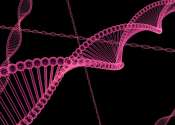Genetic signature may predict response to immunotherapy for non-small cell lung cancer
A new study identified a set of 140 genes that may help predict enhanced disease-free survival in patients with non-small cell lung cancer (NSCLC) treated with a combination of immunotherapy and low-dose radiation. The results, ...
Feb 23, 2024
0
29









